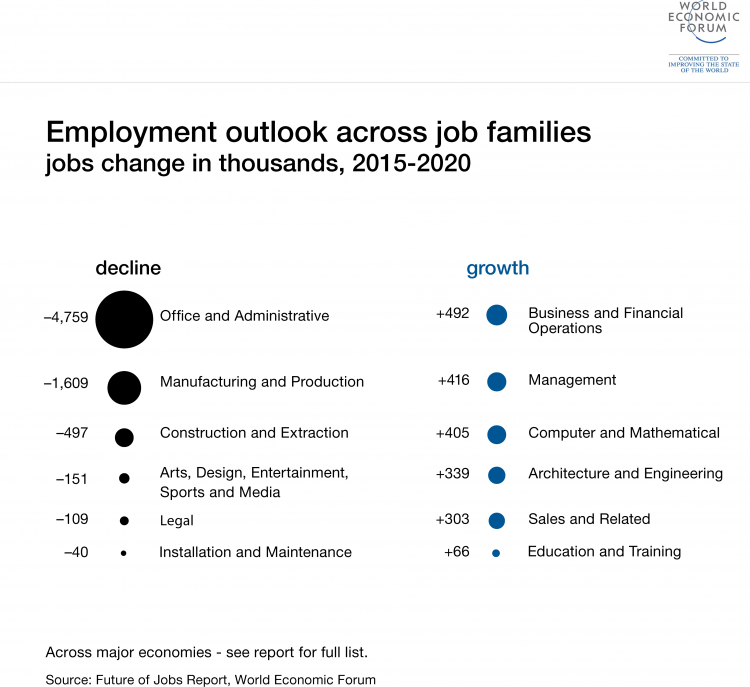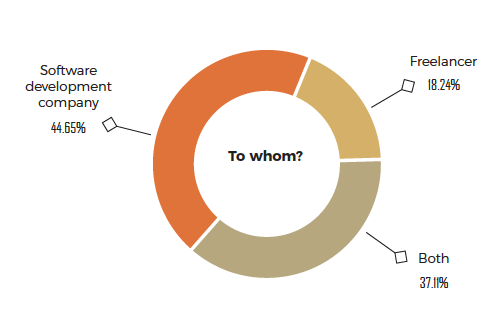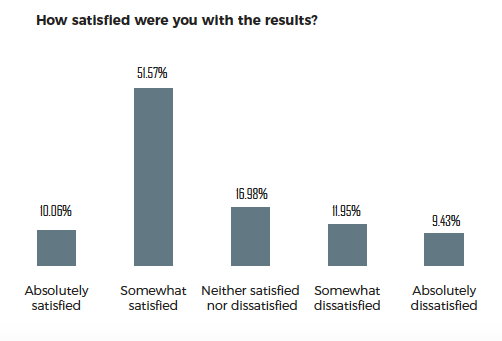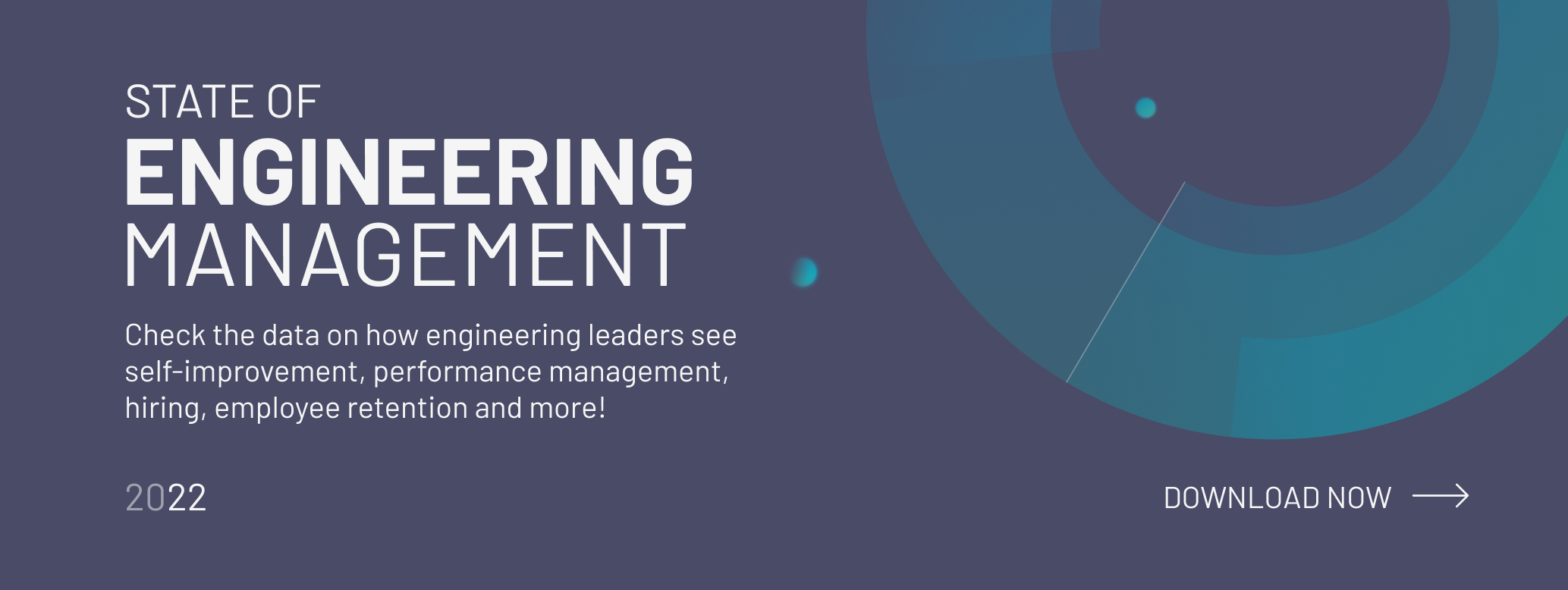
When it comes to software development outsourcing, there are a few things that keep people away.
Outsourcing used to have a bad reputation, mainly because of the horror stories we heard. Worrying about the outcome and whether it was going to work or meet the quality standards, considering potential communication troubles with the outsourcing company and the constant fear of whether they were going to deliver on the promise made the idea less than attractive.
This worry increases when it comes to hiring a company outside your country or even your continent, typically due to the cultural differences.
But things are changing for the better.
In this post, I show you how a modern software outsourcing company like Coding Sans works to increase trust and deliver on the promise. This post also provides some actionable tips you can apply anytime when you outsource software development.
We'll cover:
SOFTWARE DEVELOPMENT OUTSOURCING TRENDS
More and more companies are relying on software outsourcing, mostly due to the shortage of software developers.
It seems this growing demand won’t stop in the near future.
The Future of Jobs survey (surveyed executives from more than 350 employers from various industries), revealed an increasing demand for software development related jobs between 2015 and 2020.
More specifically, by 2020, 2 million jobs will be created worldwide that fall under computer, mathematical, architecture, and engineering related fields.

The state of software development report uncovered that one of the biggest challenges tech companies are facing is hiring developers. Actually, 33.55% of developer managers said so.
We also asked tech people regarding outsourcing activities. It turned out that 52.5% of tech companies already outsourced software development.
44.65% of them were to software development companies and 18.24% to freelancers; the remaining 37.11% worked with both software development companies and freelancers.
But the big question is, if they were satisfied at all with the results.
Well, 61.63% were satisfied with the outcomes.
From the 2017 survey that focused on startup companies, 47.88% of the companies that worked with an outsourcing partner were satisfied with the result.
Interestingly, of those who said they never outsourced software development, only 4.86% said they’re planning to do so in the future.
THE REASONS IT PROJECTS FAIL
Almost everyone has a silver bullet answer to solve it, but the problem is more complex.
One estimate of IT project failure rates are between 5 and 15%, which represents a loss of $50 billion to $150 billion per year in the United States alone.
In general, IT projects fail because of the following reasons:
- Requirements are unclear
- Expectations are unrealistic
- Communication is poor (57% of the projects fail because of this)
- No end-user involvement
- Lack of flexibility
- Poor testing
When it comes to software development outsourcing, the same reasons threaten the project failure, and there could be additional risks that might keep you away from outsourcing software development. But this post is here to handle those risks.
COMMON OBJECTIONS AGAINST SOFTWARE OUTSOURCING
We explicitly asked tech companies what are the things that keep them away from outsourcing software development. Here are their top objections:
- Unreliable code quality
- Bad and/or miscommunication
- Hidden costs
- Misdelivery
- Losing control over the product
The way software outsourcing companies and other companies work together has changed a lot in the past years, mainly due to the new technologies and tools that make it much easier to collaborate and communicate, no matter where the team members are based.
Also, software outsourcing companies have to do better in order to stay in the business in the long-term.
Software development outsourcing isn’t just sending over the specifications and expecting the development company to come back with the ready product within the expected deadline.
The era of black boxing is over.
A modern software outsourcing partnership works like a remote team, distributed across the world but collaborating together.
When it comes to software outsourcing, companies need to follow the practices developed by remote companies.
Why so?
Just think about it.
Remote companies heavily rely on communication. Team chat applications, shared documents, and video chats make the remote work possible.
If you want to make your software outsourcing project work (and why on Earth wouldn’t you want to?) then the way you work with your selected software development company should follow the practices remote companies apply and the tools they use.
There are 3 things remote teams do exceptionally well:
- Communication: frequent calls, chat apps, meetings, standups
- Collaboration: using tools that allow co-creation and easy shareability
- Transparency: work should be transparent to the team members so they can give feedback early and often, which helps keep things on track
These are the three pillars of a successful software outsourcing project.
If you are planning to work with a software development company, you should set these rules in stone or at least in the contract.
Let’s dive deeper into how a successful software outsourcing collaboration should work.
1. EXPECTATIONS SHOULD BE SET IN STONE
The more detailed it is, the better!
Setting expectations has two sides.
1. Expectations regarding the software team
What do you expect from the software development company? How many developers will work on the project? When are they available? How often do you have a call? How do you check code quality and daily progress?
2. Expectations regarding the project
I know it’s really hard to follow an initial plan because plans exist to change them. But it’s so common that the project starts and the specification keeps growing, which endangers project delivery.
Sounds cliché, but it’s super important to do the following:
- Find out the most important product requirements. (They have to be well-defined, prioritized and easy to understand for everyone.) Select the most important features you want from the software development company to build.
- Stick to it!
- Minor changes are ok, but broadening the scope with new features is a big no-no. Instead, schedule them for the next iteration.
To set the expectations clear, here are a few things that definitely help:
- Create a mockup of the app. Luckily, there are many free and paid tools available.
- Write user stories that help to think through the whole process how users will be able to use the app. Here is a guide that helps.
2. COMMUNICATION
Good communication is the backbone of a successful software outsourcing project.
Even if the product specifications are clear for the project stakeholders, project members still need to communicate. Not that surprising, right? Here is how to do it:
First, there needs to be a platform available for every stakeholder of the project. This channels every communication that could take place between the project members. Slack is a pretty cool tool for that. It’s really effective to address every product-related issue that arises between meetings. This is a great way to ensure that everyone is involved and updated about the roadblocks, questions and the project’s current state.
Tools make communication possible, but you need a routine that truly enhances the power of it.
Regular meetings
Apart from using a chat platform, there needs to be a way that provides face-to-face communication between you and your offshore software developer team. Google hangout is a free solution for screen sharing and video conferencing. Zoom is also a good alternative. How often should you have meetings?
It’s vital to find the right balance for the meetings. No one likes to waste their time sitting in pointless meetings. Here are some essential meeting forms we recommend. Daily meetings: These are daily scrum meetings (usually not longer than 10 minutes) when project members working on the product should answer the following questions:
- What did you do yesterday?
- What are you doing today?
- Are there any obstacles that are preventing you from achieving your daily goal?
These daily meetings keep project members on the same side, and they are a great opportunity to give early feedback on progress and quality.
Retrospective meetings: Take a bird’s eye view on the project to better understand what happened in the last sprint. It’s a good opportunity to learn from mistakes and to figure out how to prevent them from happening again.
Breaking down your project into smaller chunks is probably the smartest thing you can do. It allows you to see in action how the software development company actually works and it makes development more agile and responsive to feedback and corrections.
3. REGULAR FEEDBACK LOOPS
Code tracking
Communication is just one thing, but you still don’t know what’s happening in the black box, inside the software the developers are working on. This is the most important part of ensuring code quality. This is the virtual way to look over someone’s shoulder and review their code. Make sure your software development team uses GitHub or another similar code sharing and publishing service. This is a great way to actually see how the remote team contributes to the project, giving a real picture of code quality.
It's also recommended that you use some kind of project management tool to keep tracking the tasks and the progress of the project. JIRA combined with Confluence (a document and specification sharing tool) gives a real boost to the project. Documents and specifications can be attached to every task, making it easier to oversee the project and to avoid getting lost in the documentation. But you can use a Trello board or similar tools, depending on the complexity of your project.
The code the software development company writes for you should be visible to you with all the comments and edits.
This makes the whole project transparent, which increases trust and also keeps every project member on the same side and provides ways to check up on the code quality and the direction of the product development on a daily basis.
CONCLUSION
There is no silver bullet to magically make a software outsourcing project successful, but there are certain practices you can apply so you will be on the right track to make it a successful project.
All in all, here is what you need to do:
Have a clear plan of the software development company should build by providing user stories and mockups. Clarify what tools you will use for communication and project management and make sure every project stakeholder has access and uses them.
Breaking up your project into smaller chunks not only helps to iterate faster but it is a great way to see how the software development team works, opening up the opportunity to make small adjustments and also provide feedback so they can do better in the next sprint.
Read more on how to order IT projects like a boss.
What You Should Do Now
👉 If you are serious about becoming a great engineering leader, you should take a deep dive into the State of Engineering Management 2022 report.
🚀 Need developers for your team or project? Hire our experienced Angular, React or Node.js developers! Click here for a FREE consultation.
About the author:
Tamas Torok is a marketer, helping tech companies to grow. He currently leads the marketing operations at Coding Sans and focuses on crafting high-quality, research-based content for engineering leaders. He started publishing the State of Software Development report and supports the growth of the Level-up Engineering podcast, dedicated to engineering leaders.















